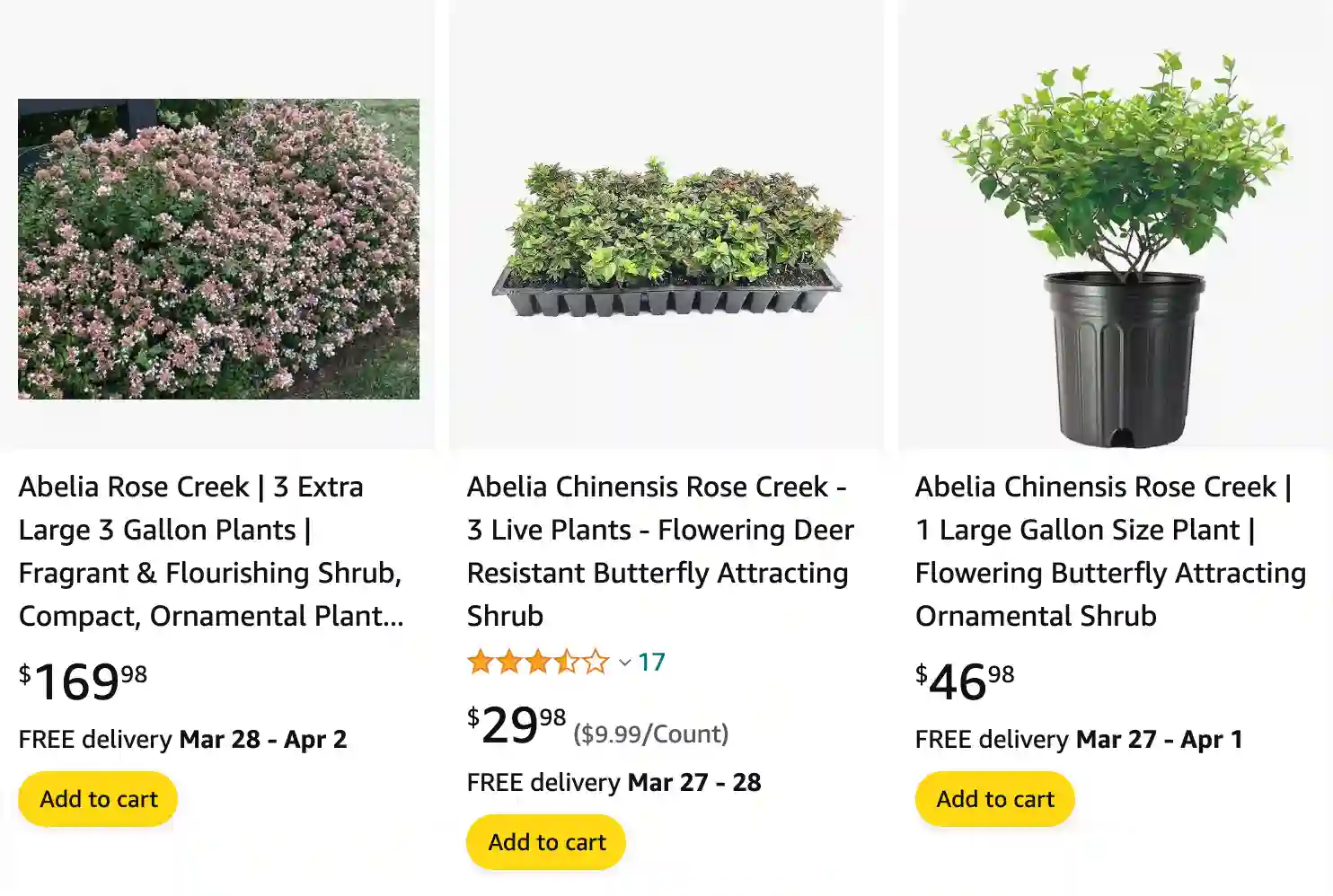Introduction
Hello, I’m Ferb Vu, and today I want to share my personal experiences and opinions about the wonderful Rose Creek Abelia. Over the years, I’ve had the pleasure of growing these shrubs in my garden, and I can’t help but express my admiration for this compact, evergreen beauty. From its fascinating characteristics to the care it demands and the variety it offers, Rose Creek Abelia has brought a touch of elegance to my garden. So, come along as I dive into my journey with this remarkable plant.


Characteristics
According to my actual experience, Rose Creek Abelia, scientifically known as Abelia x grandiflora ‘Rose Creek’, is a dense, compact evergreen shrub that adds a touch of grace to any garden. Its stunning features make it an attractive choice for garden enthusiasts like me.
The foliage of the Rose Creek Abelia is a showstopper. In spring, the glossy leaves emerge with a delicate pink tint before maturing into a lustrous dark green. The evergreen nature of this shrub is a real boon for those of us living in USDA Zones 7-9, where the leaves turn to shades of soft purple-green during the winter.
One of the highlights of Rose Creek Abelia is its profusion of tubular, fragrant, white flowers with rosy sepals that bloom from late spring to early summer, with some continued flowering throughout the summer into fall. The sheer beauty and fragrance of these flowers are something to behold, and they are a magnet for pollinators, adding a lively atmosphere to my garden.
Rose Creek Abelia Care
Taking care of Rose Creek Abelia has been a delightful journey. Here are some key aspects I’ve discovered through my own experience:
- Soil: These shrubs thrive in well-draining, moist soil. I’ve found that amending the soil with organic compost can significantly benefit their growth. It’s essential to maintain slightly acidic soil pH for the best results.
- Light: Rose Creek Abelia can be grown in partial to full sun, but they truly shine in full sunlight. However, in warmer climates, providing afternoon shade can be beneficial.
- Watering: Once established, these shrubs are quite drought-tolerant. During hot summers, I’ve observed that they benefit from more regular watering, ensuring the soil dries between watering and watering deeply but infrequently.
- Temperature and Humidity: Rose Creek Abelia can adapt to different climates, but some protection may be needed in extreme conditions. They’re frost and drought-tolerant, which is a significant advantage for many gardeners.
- Fertilizing: I’ve found that adding compost yearly can provide essential nutrients, but slow-release fertilizer can also boost new growth.
- Pruning: Pruning is essential to maintain their shape and encourage new growth. The best time for pruning is late winter or early spring. It’s crucial not to remove more than one-third of the shrub and to avoid pruning after the flowering season.
Propagation, Varieties, and Common Problems
I’ve also delved into the propagation methods and some other insights about Rose Creek Abelia:
Propagation: Propagating Rose Creek Abelia can be done through softwood or hardwood cuttings. Softwood cuttings tend to have a higher success rate. I’ve taken six-inch cuttings, dipped them in rooting hormone, and planted them in well-draining soil. Alternatively, you can grow them from seeds, although this method may lead to variations from the parent plant.
Varieties: While Rose Creek Abelia is already a fantastic choice, there are other Abelia varieties you might want to explore, like the Glossy Abelia, ‘Kaleidoscope’ Abelia, and ‘Edward Goucher’ Abelia. Each has its unique features and charm.
Common Problems: One of the common issues I’ve faced is the overuse of nitrogen-rich fertilizers, which can lead to fewer white flowers and more lush growth. The shrub can also develop yellowing leaves if the soil doesn’t drain well, potentially leading to root rot. In addition, there may be occasional visits from aphids, mealybugs, spider mites, and thrips, which can be managed with insecticidal soap or neem oil.
FAQs
Let’s address some frequently asked questions:
What is the lifespan of Abelia?
Abelia can have a long lifespan, and with proper care, they can live for many years, providing beauty to your garden season after season.
What does the Abelia flower symbolize?
Abelia flowers are often associated with femininity and grace. They symbolize the beauty of the female soul and are used to express admiration.
Which Abelia is the most fragrant?
Rose Creek Abelia is known for its fragrant white flowers, making it a delightful choice for those who appreciate scented blooms.
How far apart should Abelias be planted?
For Rose Creek Abelia, it’s recommended to plant them approximately six feet apart to allow them to reach their mature size without overcrowding.
Where can you buy Rose Creek Abelia?
Rose Creek Abelia is not hard to find and is available at most local garden centers. Online nurseries like Plantly also offer a selection of Abelia varieties for your convenience.
Conclusion
In conclusion, my journey with Rose Creek Abelia has been an enriching and delightful experience. This versatile, evergreen shrub has brought a touch of elegance and charm to my garden, thanks to its stunning characteristics, easy care, and the variety it offers. I hope that my personal experiences and insights have provided you with a better understanding of this beautiful plant and have inspired you to consider adding it to your own garden. Happy gardening!



